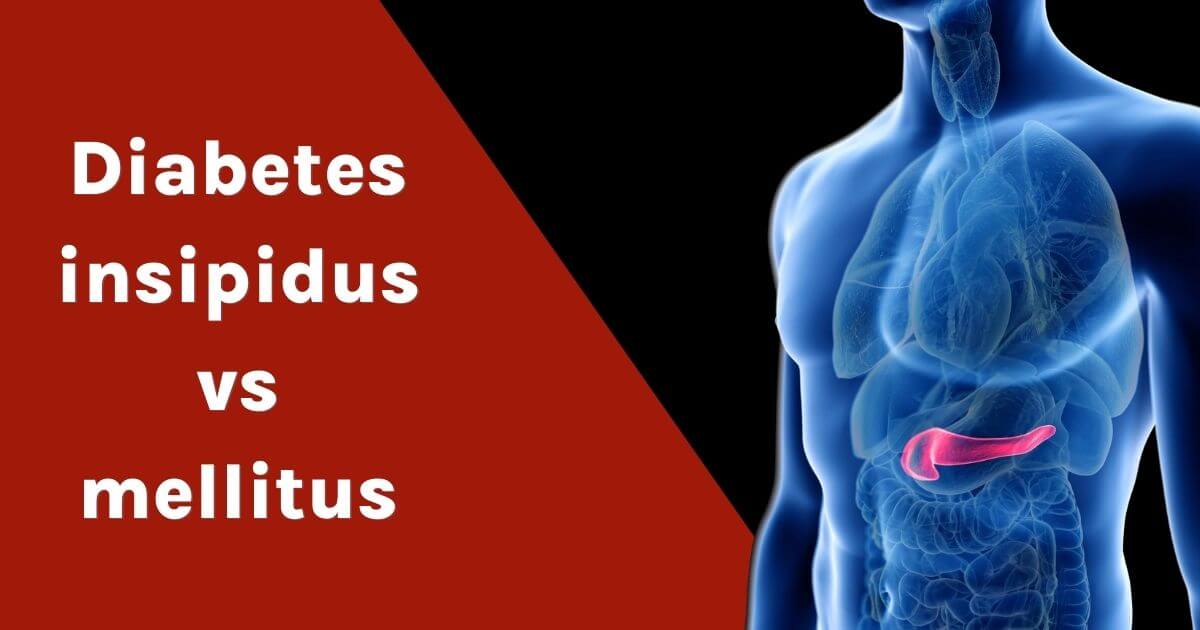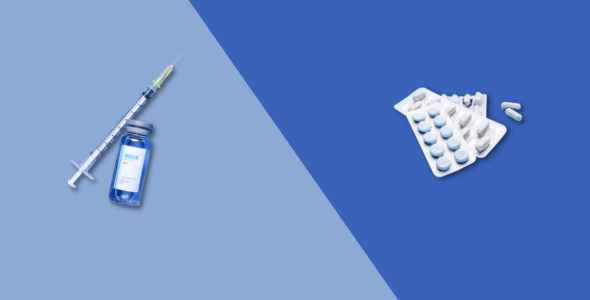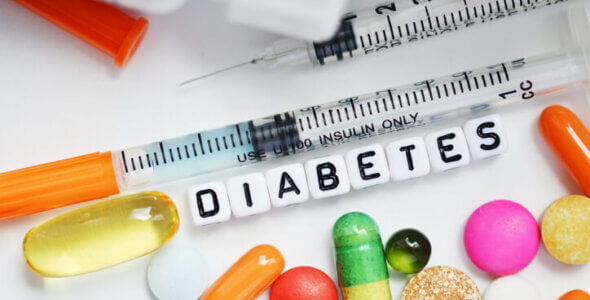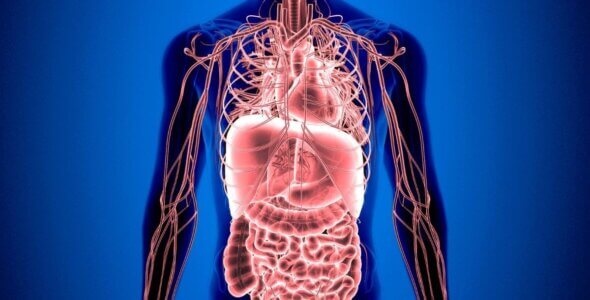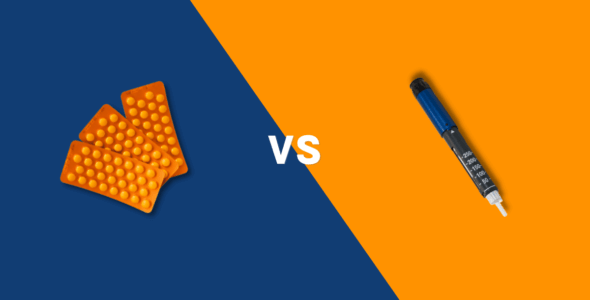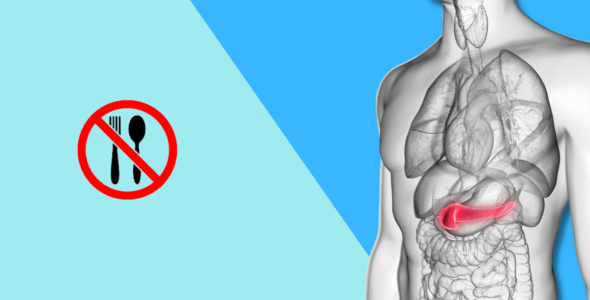Diabetes insipidus vs mellitus
Table of contents
- What is diabetes insipidus?
- Symptoms of diabetes insipidus
- What causes diabetes insipidus?
- How is diabetes insipidus diagnosed?
- Diabetes insipidus treatment
- Living with diabetes insipidus
- What is diabetes mellitus?
- Symptoms of diabetes mellitus
- What are the causes of type 1 and type 2 diabetes?
- How is diabetes mellitus diagnosed?
- Diabetes mellitus treatment
- Living with diabetes mellitus
Diabetes insipidus is not related to diabetes mellitus (type 1 diabetes or type 2 diabetes) despite the name. Diabetes Insipidus is a rare condition. It is caused due to problems related to a hormone called anti-diuretic hormone (ADH). There is no increase in blood sugar levels, unlike diabetes mellitus.
Diabetes mellitus and diabetes insipidus have very few similar symptoms. The only real similarity is the first word of their name. These diseases cause different problems in the human body and have very different treatments. Let us understand the main difference between diabetes insipidus vs. diabetes mellitus.
What is diabetes insipidus?
Diabetes insipidus is a hormone disorder. It occurs when there is a problem with the secretion of antidiuretic hormone (ADH) or vasopressin. It can also occur if your body doesn’t use the hormone effectively. There are four types of diabetes insipidus:
- Central diabetes insipidus – damaged pituitary gland or hypothalamus gland
- Nephrogenic diabetes insipidus – often caused by chronic kidney disease
- Dipsogenic diabetes insipidus – often caused by damage to the thirst mechanism
- Gestational diabetes insipidus – caused by an enzyme made by the placenta which destroys ADH in the mother
Symptoms of diabetes insipidus
The main symptoms of diabetes insipidus are:
- Exhaustion
- An extreme thirst that can not be quenched, known as polydipsia
- Excessive urination known as polyuria
The amount of urine most people produce is 1-3 quarts(qt) per day. People who have diabetes insipidus may have urine production up to 20 quarts a day. They may have to get up multiple times during the night to urinate, they may wet the bed and can appear confused. Diabetes insipidus causes thirst due to dehydration from constant urination. This keeps electrolyte levels e.g. calcium and potassium in the body low, and those affected with diabetes insipidus are commonly tired.
What causes diabetes insipidus?
Diabetes insipidus has several causes. Damage to either the hypothalamus or the pituitary gland can cause diabetes insipidus. This can occur after a head injury, during brain surgery, or when a tumor grows on the glands. Kidney disease and hypercalcemia (excess calcium in the body) or taking certain drugs such as lithium can cause diabetes insipidus too.
How is diabetes insipidus diagnosed?
Diabetes insipidus can be diagnosed with blood tests to check sodium levels and urinalysis using a urine sample. This will be able to tell if your kidney is making enough concentrated urine and if it is dilute urine. Your healthcare professional may also order a water deprivation test and an MRI (magnetic resonance image) scan.
Diabetes insipidus treatment
Your healthcare professional may prescribe medicine to reduce your urine output. This medicine will help your body produce or use ADH more effectively. A drug called desmopressin is a synthetic form of ADH and can be used. Desmopressin comes as a tablet, as a shot, or as a nasal spray.
Medicines like hydrochlorothiazide (a water pill) may also help. Water pills help your body balance salt and water.
If your diabetes insipidus could be caused by tumors or abnormal growths on your hypothalamus or pituitary gland your doctor may suggest surgery to remove the growths.
If a medicine is causing diabetes insipidus, your doctor may prescribe an alternative that won’t cause excessive thirst and urination. Discuss which treatment option is best for you with your doctor.
Living with diabetes insipidus
There is no cure for diabetes insipidus, only management of symptoms to improve quality of life. Medicine can help prevent the constant thirst and excessive urination that comes with this condition.
What is diabetes mellitus?
Diabetes Mellitus is a condition that causes high blood sugar or high blood glucose levels in the blood.
Symptoms of diabetes mellitus
Having too much glucose in your blood can cause these early symptoms of diabetes:
- Tiredness
- Hunger
- Urinating more often
- Thirst
- Dehydration
- Blurred vision
- Slow-healing cuts/sores
- Yeast infections
What are the causes of type 1 and type 2 diabetes?
The most important hormone to understand in diabetes is insulin. It is made in your pancreas which is located just behind your stomach. Insulin is the major metabolic hormone of carbohydrate metabolism.
Your pancreas detects your glucose falling and turns off the release of insulin. This stops your blood sugar from going too low (hypoglycemia). At the same time, your liver begins to make more glucose in your blood. This whole system helps to keep the level of glucose in your body correctly.
Insulin is the only means that the body has of lowering blood glucose levels. When this system fails diabetes occurs. Each type of diabetes involves the pancreas not functioning properly.
How is diabetes mellitus diagnosed?
Tests to diagnose both forms of diabetes and :
- Fasting blood sugar test – After an overnight fast your blood glucose level will be measured
- Glucose tolerance test – After an overnight fast your blood glucose level will be measured, followed by a drink containing glucose. Your blood sugar will then be retested every half hour for two hours to see how your body is responding
- Random blood sugar test – This test does not require an overnight fast but is taken any time of the day
- Hemoglobin A1c test – This test measures the average blood sugar control over the last two to three months. Often used to check if a person has prediabetes
Diabetes mellitus treatment
The only treatment for type 1 diabetes is insulin. If you have this type of diabetes your body is unable to produce insulin, therefore you need to inject it directly into your body. As a result, there is no cure for type 1 diabetes.
A wide variety of diabetes medications is available if lifestyle changes do not work in the first instance. Most medications for type 2 diabetics are oral drugs. However, a few come as injections. Some people with type 2 diabetes may also need to use insulin.
Living with diabetes mellitus
Unfortunately, type 1 diabetes can not be prevented. You may lower your risk of developing type 2 diabetes by lifestyle changes and developing new routines, such as:
- Keeping to a healthy weight to avoid obesity
- Increase your activity levels to aid in weight loss
- Eating a healthy diet to help control cholesterol levels
- Reduce smoking and blood pressure
The table below shows some of the differences between diabetes insipidus and diabetes mellitus.
| Diabetes Inspidius | Diabetes Mellitus | |
|---|---|---|
| Cause | Usually caused by a hormone imbalance | Type 1 - Autoimmune Disease Type 2 - Genetics, lifestyle, infection |
| Volume of urine | Extremely excessive | Excessive |
| Blood glucose levels elevated | No | Yes |
| Glucose in urine | No | Yes |
| Concentration of urine | Diluted | Normal |
| Cholesterol levels | No increase | Increased |
| Hunger | Normal | Excessive hunger |
| Ketone formation | No | Yes |
Medically reviewed
A medical professional has reviewed this article.


Jamie Winn, PharmD
Jamie Winn, PharmD
Dr. Jamie Winn received his Doctor of Pharmacy in 2002 from the University of South Carolina College of Pharmacy, Columbia, SC. Jamie is a medical reviewer for NiceRx.

